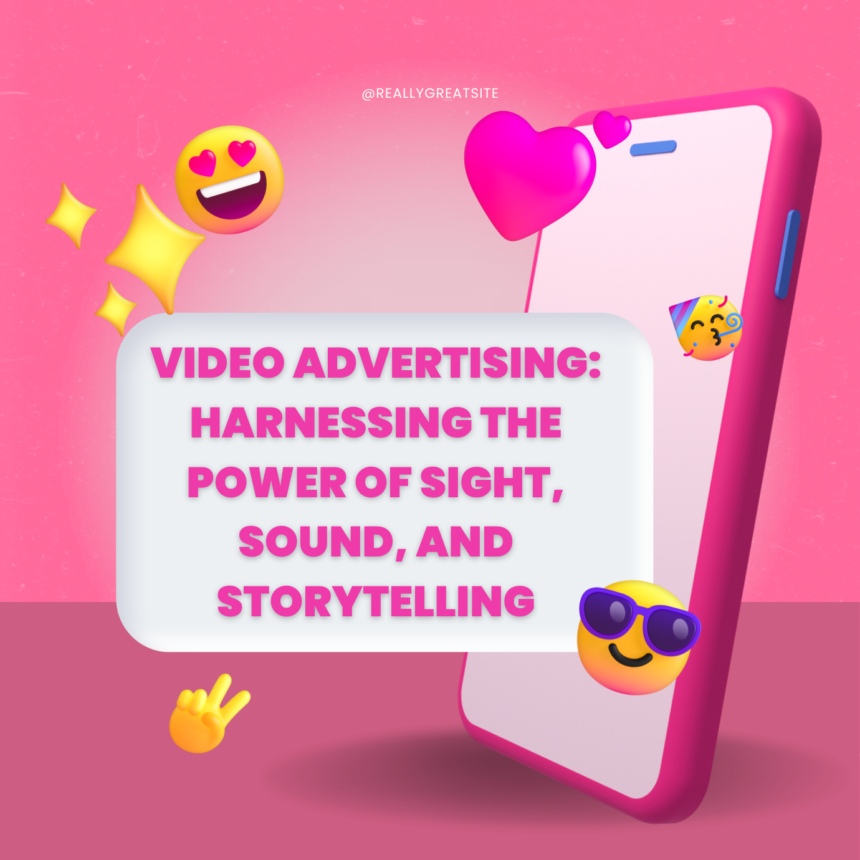Video advertising is a dynamic and engaging form of marketing that leverages the power of sight, sound, and storytelling to captivate audiences. With the rise of video consumption on various platforms, video advertising has become a crucial strategy for businesses. Here are key insights and strategies for harnessing the power of video advertising:
1. Know Your Audience: Understand your target audience’s preferences, interests, and behaviors. Define their demographics and psychographics to create video content that resonates with them. Tailor your messaging and storytelling to appeal to their emotions, needs, and aspirations.
2. Grab Attention Quickly: In today’s fast-paced digital world, capturing attention within the first few seconds is crucial. Start your video with a hook or captivating visual to engage viewers right away. Use intriguing thumbnails, compelling headlines, or intriguing opening shots to entice users to watch the full video.
3. Tell Compelling Stories: Storytelling is a powerful tool in video advertising. Craft narratives that evoke emotions, create a connection, and convey your brand’s message effectively. Use storytelling techniques such as compelling characters, conflict, resolution, and a clear call-to-action to drive engagement and action.
4. Optimize for Different Platforms: Tailor your video content to the platform where it will be displayed. Each platform has unique video specifications and audience behaviors. Optimize the length, format, and aspect ratio to ensure the best viewing experience. Customize your videos for social media platforms, websites, or video-sharing platforms accordingly.
5. High-Quality Production: Invest in high-quality production values to create professional-looking videos. Use good lighting, clear audio, and visually appealing aesthetics. Ensure that the production quality aligns with your brand image and the expectations of your target audience.
6. Engage with Call-to-Action: Incorporate a clear and compelling call-to-action (CTA) in your video. Guide viewers on the next steps they should take, whether it’s visiting your website, making a purchase, subscribing to a newsletter, or sharing the video with others. Make the CTA easy to understand and visually prominent.
7. Test and Optimize: Conduct A/B testing to gauge the effectiveness of different video variations. Test different elements such as video length, messaging, visuals, and CTAs to identify what resonates best with your audience. Analyze key metrics like view-through rates, engagement rates, and conversion rates to optimize your videos for better performance.
8. Mobile-Optimized Videos: With the increasing consumption of video content on mobile devices, optimize your videos for mobile viewing. Ensure that your videos are mobile-friendly, load quickly, and display properly on smaller screens. Consider vertical video formats to make the most of mobile viewing habits.
9. Targeted Video Advertising: Utilize targeting options available on various advertising platforms to reach your desired audience. Leverage demographic filters, interests, behaviors, and retargeting capabilities to deliver your video ads to the most relevant viewers. Targeting ensures that your videos are seen by the right people, increasing the chances of engagement and conversion.
10. Measurement and Analytics: Implement tracking and analytics tools to measure the performance of your video ads. Monitor metrics such as views, engagement rates, click-through rates, and conversions. Gain insights into viewer behavior, preferences, and trends to refine your video advertising strategy and improve results over time.
By implementing these strategies, you can harness the power of video advertising to effectively engage and influence your target audience. Compelling storytelling, visually appealing content, and a clear call-to-action can drive brand awareness, engagement, and ultimately, conversions for your business.
